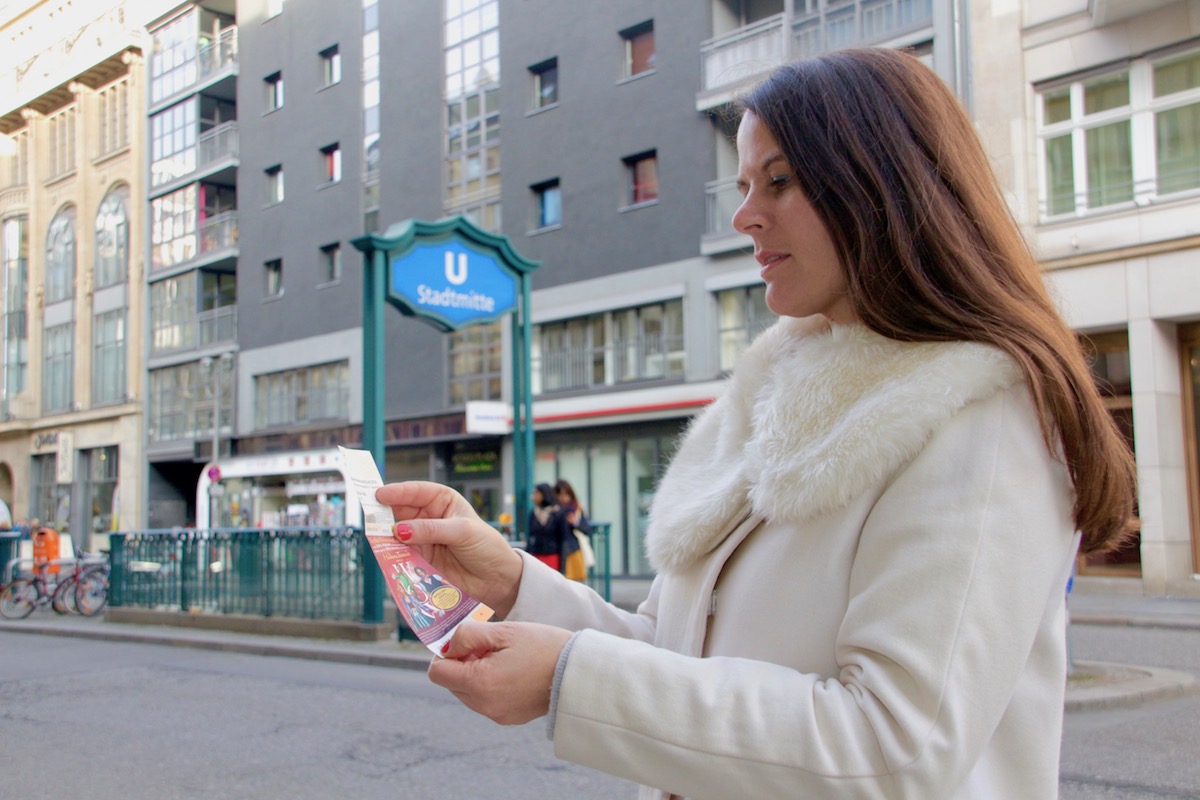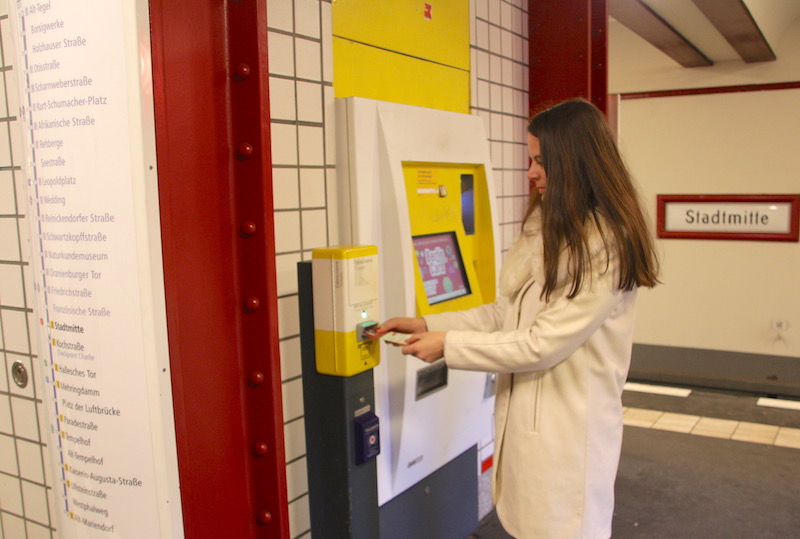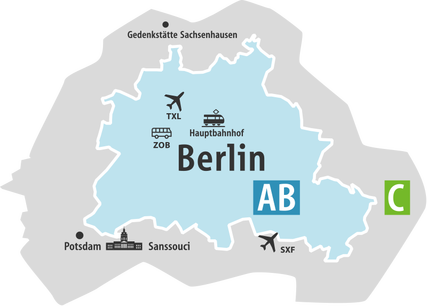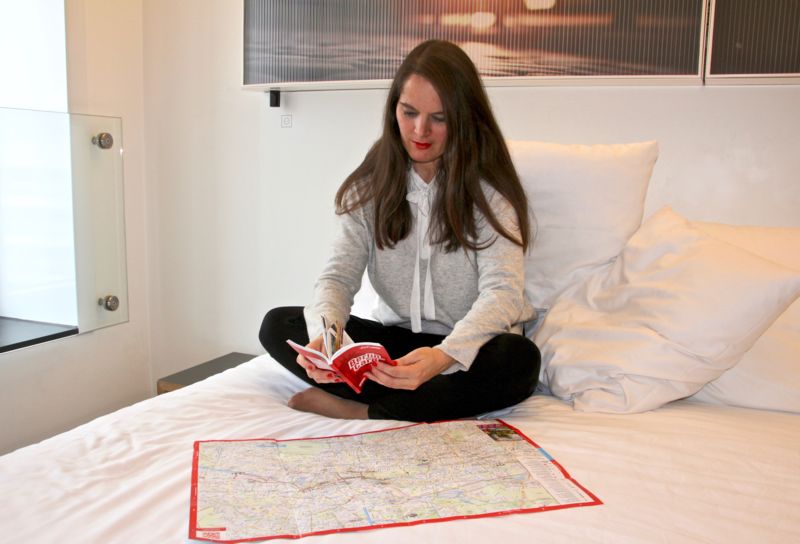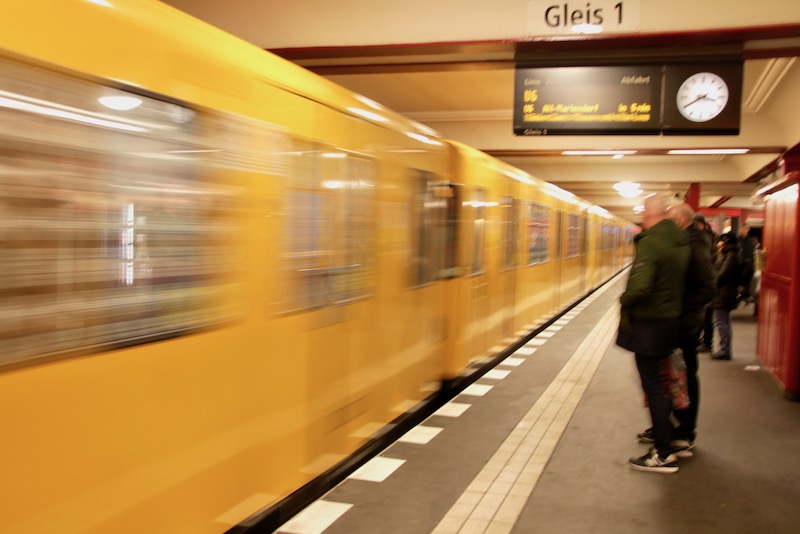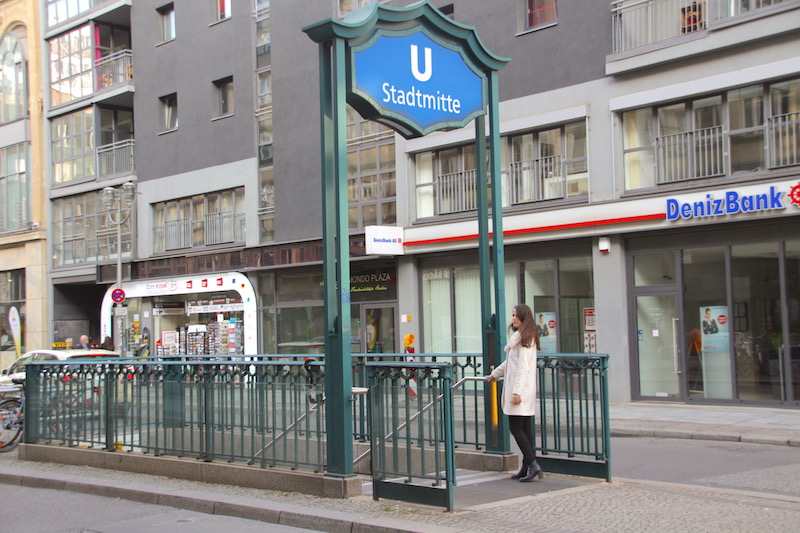Text and Photos by Vera Dantas. All rights reserved.
Read English version bellow
Berlim é uma cidade fabulosa e vibrante, uma das minhas favoritas na Europa. Os transportes públicos em Berlim são excelentes e servem a grande área metropolitana da cidade. Berlim tem 12 distritos administrativos e 23 bairros, e uma população de 3,5 milhões de habitante e está muito bem organizada, reflectindo a cultura característica dos alemães. Por isso, quando visitar a cidade, saiba que vai ter sempre boas opções para se movimentar muito fácil e eficazmente entre quaisquer dois pontos geográficos da área metropolitana. E o melhor é que não tem que gastar muito dinheiro para fazê-lo: Berlim está extremamente bem servida de transportes públicos. E é deles que vos vou falar.
Conteúdo deste artigo:
Que tipos de transporte público há em Berlim?
U-Bahn – rede metropolitana
Com as suas 10 linhas, o metro de Berlim cobre uma rede de cerca de 146 km e inclui 173 estações. A maioria das linhas corre no subsolo mas tem também linhas à superfície. Durante a semana funciona das 4:00 da madrugada à 1:00 da manhã. Durante o dia, os metros passam a cada 5 minutos e à noite a cada 10 minutos. Ao fim de semana funcionam 24 horas por dia, com intervalos de 10 minutos durante o dia e 15 minutos à noite.
S-Bahn – Comboios ligeros/metro de superfície
A S-Bahn Berlin tem 15 linhas numa rede regional de 300 km com quase 170 estações de comboio. No centro de Berlim os S-Bahn andam na maioria à superfície. As estações podem identificar-se pelo símbolo S verde e branco.
Bus – autocarro
É o mais antigo sistema de transportes de Berlim, datado de 1846. Cobre percursos não abrangidos por outros meios de transporte. Tem autocarros de 2 andares com excelentes vistas. Existem autocarros nocturnos, marcados com a letra N.
Berlim tem uma das mais antigas redes de eléctricos do mundo. As linhas de Tram complementam a a rede do Metro com mais de 20 linhas concentradas sobretudo na parte oriental da cidade. Pode consultar aqui um mapa da rede conjunta de metro e eléctrico.
Viajar de barco é uma excelente forma de ter uma perspectiva diferente de Berlim. Já fiz o passeio de barco da Ilha dos Museus e aconselho vivamente – pude apreciar o contraste entre a arquitectura clássica monumental dos museus e a arquitectura contemporânea verdadeiramente impressionante de Berlim. Existe uma grande variedade de percursos que pode consultar aqui.
Quanto custam os bilhetes?
Em Berlim há 3 zonas de tarifários:
Zona A: cobre o círculo do S-Bahn e inclui o centro da cidade.
Zona B: termina nos limites da cidade
Zona C: inclui a área restante, como o Aeroporto Berlin-Schönefeld, Potsdam e Oranienburg.
A tarifa regular aplica-se a adultos. Quem viaja com crianças vai gostar de saber que até aos 6 anos estas viajam de graça e, entre os 6 e os 14 anos têm desconto na tarifa.
Os preços podem ir dos 1,70€ por 1 bilhete para uma viagem curta até aos 3,40€ para um bilhete que abrange as zonas ABC. Há bilhetes diários e bilhetes para 4 dias. Pode encontrar toda a informação sobre transportes, percursos e os preços actuais aqui. A melhor forma de planear as suas viagens na cidade é usando o journey planner disponível online do site da BVG, onde pode inserir o local de partida e de destino e encontrar as melhores soluções para o seu percurso.
Há algum cartão que combine viagens e descontos nas atracções da cidade?
Como é comum nas grandes cidades, Berlim tem um cartão para os visitantes que concilia transportes e descontos em atracções e actividades da cidade. Quem visita Berlim normalmente fica mais do que um dia e visita vários monumentos, por isso o que eu aconselho é que tracem um plano de viagem com os vossos objectivos porque, quase de certeza, vai compensar adquirirem uma alternativa aos bilhetes de transportes convencionais, o Berlin Welcome Card.
Além de permitir viajar sem restrições, todo o dia, pelas zonas da modalidade que escolherem, ainda dá descontos numa série de atracções (200, para ser precisa), inclui um pequeno guia da cidade com mapa, muito útil e fácil de consultar. Na minha última viagem a Berlim usei este cartão e voltarei a usá-lo nas próximas visitas. Achei muito prático ter que o validar apenas uma vez em toda a minha estadia de 4 dias e pude usar qualquer transporte, a qualquer hora.
Além disso, os descontos em museus, restaurantes e até espectáculos acabam sempre por compensar, até porque os preços das entradas não são algo a menosprezar no orçamento de viagem. Por exemplo, num dos melhores museus do mundo, o Museu de Pérgamo, o Berlin Welcome Card permite a entrada gratuita na exposição permanente, que tem um custo normal de 19 €. Quem tem crianças poupa ainda mais: as crianças que viajem acompanhadas por um adulto com o BWC viajam de graça.
Pode comprar o Berlin Welcome Card com antecedência neste link. Receberá por email um vale para imprimir. Foi o que eu fiz. Quando cheguei a Berlim fui logo a Berlin Tourist Info Center do Aeroporto de Berlin-Schönefeld e lá trocaram-me o vale por um bilhete BWC e deram-me o guia de visita com mapa, sugestões e informações sobre todos os descontos.
Além de toda a informação que encontrará online nos links que aqui deixei, pode sempre consultar um dos postos de turismo existentes no aeroporto, logo à sua chegada a Berlim. É a melhor forma de perceber, na prática, como tirar proveito do mapa da extensa rede de transportes. Se estiver muito carregado com malas e o seu percurso implicar mudanças de linha de metro ou mesmo de tipo de transporte, pergunte qual a distância entre os mesmos, pois às vezes não é pequena e nem sempre encontrará elevadores nas estações de metro. Mas nada de desesperos: os berlinenses em geral falam bem inglês e são muito prestáveis. Aconteceu-me várias vezes perguntar direcções e as pessoas, por não terem a certeza do melhor percurso, pegarem no telemóvel e abrirem o googlemaps para me informar. Não há como se perder em Berlim. E há muito para encontrar!
English Version
Berlin is a fabulous and vibrant city, one of my favourites in Europe. With a large metropolitan area covering 12 administrative districts and 23 neighbourhoods, it has a population of over 3.5 million, which is hard to believe, given the good urban and cultural organisation that is characteristic of the Germans. So when you visit the city know that you will always have good options to move very easily and efficiently between any two geographic points of the metropolitan area. And the best thing is that you do not have to spend a lot of money to do it: Berlin is extremely well served by public transport. So I will let you know all about them in this article.
What the types of public transport are there in Berlin?
U-Bahn – metropolitan network
With its 10 lines, the Berlin subway covers a network of about 146 km and includes 173 stations. Most of the lines run underground but there are also surface lines. During the week it runs from 4:00 am to 1:00 p.m.. During the day, trains pass every 5 minutes and in the evening every 10 minutes. At the weekend they operate 24 hours a day, at 10-minute intervals during the day and 15 minutes at night.
S–Bahn – light trains / surface meter
The S-Bahn Berlin has 15 lines in a regional network of 300 km with almost 170 train stations. In the center of Berlin the S-Bahn run mostly on the surface. The stations can be identified by the green and white S symbol.
It is the oldest transport system in Berlin, dating from 1846. It covers routes not contemplated by other means of transport. There are 2-storey coaches with excellent views during your travels. Night buses are marked with the letter N.
Berlin has one of the oldest tram networks in the world. The Tram lines complement the Metro network with more than 20 lines concentrated mainly in the eastern part of the city.
You can see a map of the metro and tram network here.
Traveling by boat is a great way to have a different perspective of Berlin. I’ve already done a boat trip to the Museum Island and I strongly recommend it – I could appreciate the contrast between the classic monumental architecture of the museums and the truly impressive contemporary architecture of Berlin. There is a great variety of routes that you can consult here.
How much are the tickets?
In Berlin there are 3 tariff zones:
Zone A: covers the S-Bahn circle and includes the city center.
Zone B: ends at the city limits.
Zone C: includes the remaining area, such as Berlin-Schönefeld Airport, Potsdam and Oranienburg.
The regular rate applies to adults. Those traveling with children will like to know that up to 6 years of age they travel for free and those between 6 and 14 years of age have a discount on the rate.
Prices can go from € 1.70 for 1 ticket for a short trip up to € 3.40 for a ticket that covers the ABC areas. There 1 Day and 4 Days tickets. You can find all information on transport, routes and current prices here. The best way to plan ahead is to insert your departure and destination goals in the journey planner available online at the site of the BVG.
Is there a card that combines travel with discounts to the city’s attractions?
As is common in large cities, Berlin has a card for visitors that combines transport tickets and discounts on attractions and activities in the city, the Berlin Welcome Card.
Visitors to Berlin usually stays for more than a day and visit several monuments, so I advise you to make a travel plan with your goals because it will almost certainly compensate in terms of cost compared to conventional transportation tickets,.
In addition to allowing unrestricted travel, all day long, on the areas of the modality of your choice, you still get discounts on a number of attractions (200, to be precise), a small city guide with a map, very useful and easy to consult. On my last trip to Berlin I used this card and will use it again in the next visits. I found it very practical to have to validate it only once in my entire stay of 4 days and I was able to use any transport, anytime.
In addition, discounts on museums, restaurants and even shows always pay off, not least because ticket prices are not something to be overlooked in the travel budget. For example, in one of the best museums in the world, the Pergamon Museum, the Berlin Welcome Card allows free admission to the permanent exhibition, which has a normal cost of € 19. Those with has children save even more: children accompanying an adult with the BWC travel for free.
You can buy the Berlin Welcome Card in advance at this link. You will receive a printable voucher by email. That’s what I did. When I arrived in Berlin, I went to the Berlin-Schönefeld Tourist Info Center and they exchanged the voucher form for a BWC ticket and gave me the tour guide with a map, suggestions and a list of all the discounts the card offers.
In addition to all the information you will find online in the links on this post, you can always consult one of the Berlin Tourist Info Centers at the airport or on other locations, on arrival in Berlin. This is the best way to realize, in practice, how to take advantage of the map of the extensive transport network. If you are carrying havy suitcases and your route involves changes of metro line or even type of transport, ask the distance between them, because sometimes it is not small and you will not always find lifts or escalators in the subway stations. But don’t despair: Berliners in general speak well English and are very helpful. More than once I asked directions to Berliners and when they didn’t know the answer, they immediately picked up their cell phone and open googlemaps to let me know. There’s no getting lost in Berlin. And there is so much you can find!

